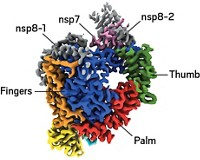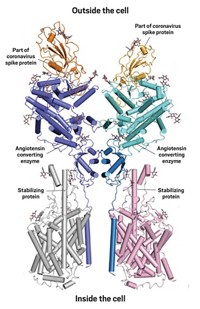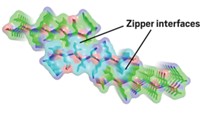Advertisement
Grab your lab coat. Let's get started
Welcome!
Welcome!
Create an account below to get 6 C&EN articles per month, receive newsletters and more - all free.
It seems this is your first time logging in online. Please enter the following information to continue.
As an ACS member you automatically get access to this site. All we need is few more details to create your reading experience.
Not you? Sign in with a different account.
Not you? Sign in with a different account.
ERROR 1
ERROR 1
ERROR 2
ERROR 2
ERROR 2
ERROR 2
ERROR 2
Password and Confirm password must match.
If you have an ACS member number, please enter it here so we can link this account to your membership. (optional)
ERROR 2
ACS values your privacy. By submitting your information, you are gaining access to C&EN and subscribing to our weekly newsletter. We use the information you provide to make your reading experience better, and we will never sell your data to third party members.
Structural Biology
Structure of SARS-CoV-2 envelope protein solved by NMR
3-D structure of the E protein from the COVID-19-causing virus unveiled
by Laura Howes
November 21, 2020
| A version of this story appeared in
Volume 98, Issue 45
At just 75 amino acids long, the envelope (E) protein is the smallest of the four structural proteins that make up the SARS-CoV-2 viral particle and is essential for the virus to infect cells. Data from other coronaviruses led researchers to assume that groups of five E proteins formed a pore spanning the virus’s lipid bilayer membrane. But direct evidence did not exist, as structural characterization of membrane-spanning proteins is tricky with the most commonly used techniques—X-ray crystallography and cryo-electron microscopy. Mei Hong’s group at the Massachusetts Institute of Technology instead used nuclear magnetic resonance spectroscopy to solve the E protein’s structure and confirm the pore formation (Nat. Struct. Mol. Biol. 2020, DOI: 10.1038/s41594-020-00536-8). The group also studied how two drugs, amantadine and hexamethylene amiloride, can bind to and block the pore. Although those drugs bind to the pore weakly, the researchers say the new structural information may help in designing drugs that target the virus.





Join the conversation
Contact the reporter
Submit a Letter to the Editor for publication
Engage with us on Twitter